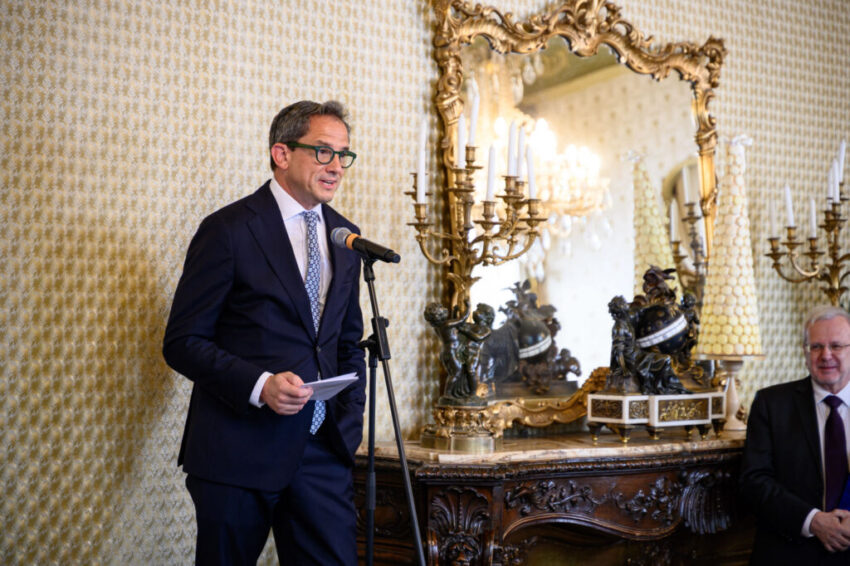Martians — Hungarian Scientists and Nobel Laureates: this is the title of the new exhibition available for all to see at Vörösmarty Square in Budapest, Hungary. As the name suggests, it is dedicated to the great Hungarian scientific minds who have made significant contributions to the world throughout history.
The word ‘martians’ here is a reference to a quip by Hungarian physicist Leo Szilárd. When asked if he believes there is life on other planets in the universe, he replied, ‘Yes, and they are called Hungarians,’ referring to the great Hungarian minds of the 20th century who were prevalent in science at the time.
Balázs Gulyás, chairman of the HUN-REN research network and the curator of the exhibition, was the first to address the audience at the opening ceremony of the exhibition, inside the nearby Café Gerbeaud. He stated that the common characteristic of the outstanding Hungarian minds on display is that they created lasting value to the collective knowledge base of humanity. He also called the exhibition a ‘great travel through time’, which showcases the best of Hungarian scientists from the 19th and 20th centuries to this day in the 21st century.
Mr Gulyás also added that the Carpathian Basin has always been fertile ground for talent, and ‘it is the duty of the nation, the country to bring scientific talent under its wings’. This is exactly what the mission of the HUN-REN research network is, he added.
Robert Palladino, Charge’ d’Affaires at the US Embassy in Budapest, spoke next. He started by saying that the exhibition is ‘more than a celebration of Hungary’s past’, and took the opportunity to announce a new partnership between HUN-REN and the US Fulbright Program. He also pointed out that of the ‘Martian’ Hungarian scientists of the 20th century, John von Neumann, Edward Teller, and Eugene Wigner all carried out their groundbreaking work in the United States. More recently, the same applies to Katalin Karikó, whose sister Zsuzsanna Karikó was present. These were the special times when ‘Hungarian brilliance met American opportunity,’ Mr Palladino has stated.
On the new HUN-REN–Fullbright partnership, the diplomat has added: ‘This is America at its best: it welcomes talent and rewards merit’, and ‘Hungary at its best: it is punching above its weight in science’.
Miklós Szánthó, Director General for the Center for Fundamental Rights, has highlighted that the date of the exhibition opening, 19 August, is symbolic of the connection between the foundation of the Christian Hungarian state and great Hungarian scientists. He, too, spoke of many of them who emigrated and did their most influential work outside of their homeland. This usually happened when ‘some kind of empire was trying to annex us’, he highlighted. However, he also pointed out that Hungarians ‘have acquired immeasurable knowledge through immeasurable suffering’, as literary Nobel prize winner Imre Kertész has said.
Now, Hungarians are yearning for ‘peace and security again’, Mr Szánthó went on to say, a pursuit in which they are now thankfully aided by ‘our American friends’.
The Martians — Hungarian Scientists and Nobel Laureate exhibition will be featured at Vörösmarty Square until 28 September, then will move to major European cities, and then travel to the United States for the 250th anniversary celebrations of the Declaration of Independence.
Related articles:
The post Robert Palladino, Miklós Szánthó Open Exhibition Honouring Great Hungarian Scientists appeared first on Hungarian Conservative.
Click this link for the original source of this article.
Author: Márton Losonczi
This content is courtesy of, and owned and copyrighted by, https://www.hungarianconservative.com and its author. This content is made available by use of the public RSS feed offered by the host site and is used for educational purposes only. If you are the author or represent the host site and would like this content removed now and in the future, please contact USSANews.com using the email address in the Contact page found in the website menu.








